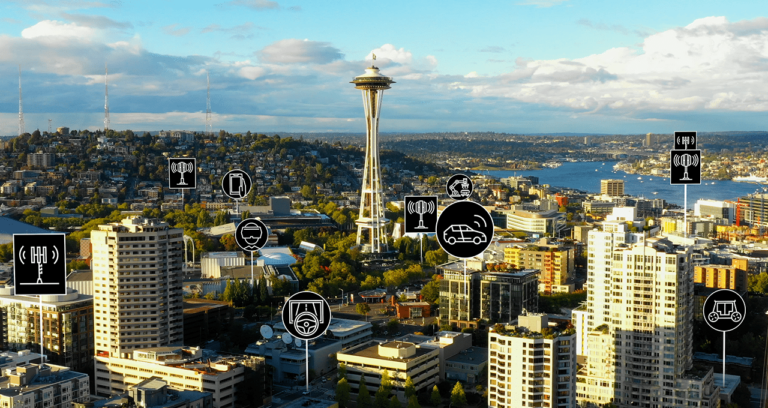Telecommunications operators are leveraging AI computing infrastructure to transform beyond voice and data services, optimize wireless networks, and address the next generation needs of mobile, robotics, autonomous vehicles, smart factories, 5G, and generative AI.
Announced today, NVIDIA AI Aerial is a suite of accelerated computing software and hardware for designing, simulating, training and deploying AI Radio Access Network technologies (AI-RAN) for wireless networks in the AI era.
The platform enables large-scale network optimization and is a key foundation for meeting the demand for a multitude of new services, significantly reducing the total cost of ownership and enabling operators to unlock new revenue opportunities for enterprise and consumer services.
NVIDIA AI Aerial will enable communications service providers to support remote operation of manufacturing robots and autonomous vehicles, computer vision in manufacturing and agriculture, logistics, generative AI-powered co-pilots and personal assistants, new spatial computing applications, robotic surgery, 3D collaboration, and advancements in 5G and 6G.
Driving future networks with AI-RAN
NVIDIA AI Aerial is the world’s first AI-RAN platform that can host generative AI and RAN traffic and integrate AI into network optimization.
AI-RAN offers high-performance, energy-efficient software-defined RAN, improved network experience, and new revenue opportunities from edge AI applications hosting internal and third-party generative AI applications.
AI-RAN will be the foundation for future multi-purpose networks that rely on AI-powered communication capabilities.
NVIDIA AI Aerial for Communications
The NVIDIA AI Aerial platform provides access to high-performance software-defined RAN and a full suite of capabilities including training, simulation and inference, allowing operators to participate at every stage of the development and deployment of next-generation wireless networks.
NVIDIA AI Aerial platform features include:
NVIDIA Aerial CUDA-Accelerated RAN includes software libraries that enable partners to develop and deploy high-performance virtualized RAN workloads on NVIDIA accelerated computing platforms. NVIDIA Aerial AI Radio Frameworks includes PyTorch and TensorFlow-based software libraries for developing and training models to improve spectral efficiency and add new capabilities to 5G and 6G radio signal processing. It also includes NVIDIA Sionna, a link-level simulator that provides for the development and training of neural network-based 5G and 6G radio algorithms. NVIDIA Aerial Omniverse Digital Twin (AODT) is a system-level network digital twin development platform. AODT enables physically accurate simulation of wireless systems, from a single cell site to a comprehensive network with many cells covering an entire city. AODT incorporates a software-defined RAN (Aerial-CUDA Accelerated RAN) and user equipment simulator, as well as realistic terrain and object properties from the physical world.
NVIDIA AI Aviation and AI RAN Innovation Center
NVIDIA is working with T-Mobile, Ericsson and Nokia to establish AI-RAN Innovation Centers to accelerate the commercialization of AI-RAN.
The center will leverage key capabilities of the NVIDIA AI Aerial platform. The collaboration is focused on bringing RAN and AI innovation closer together and delivering transformative network experiences to customers through the development of AI-RAN.
“AI-RAN is set to revolutionize the telecom industry, and the opening of the AI-RAN Innovation Center will help us on this path by fostering industry collaboration,” said Tommi Uitto, president of Mobile Networks at Nokia. “Bringing together leading companies from the telecom and AI industries will unlock the full potential of AI in networks to improve performance, reduce costs and create new opportunities for our customers. We believe AI-RAN will be a key driver of future innovation, and we are excited to be part of this revolution together with NVIDIA.”
“Ericsson has invested in our AI-RAN solutions to enable communications service providers to deploy portable RAN software that runs on multiple platforms, and we are now evaluating the performance and cost of NVIDIA Accelerated Computing in this context,” said Fredrik Jedling, EVP and head of Business Area Networks, Ericsson.
NVIDIA AI Aviation Ecosystem
Key partners in the growing NVIDIA AI Aerial ecosystem include SoftBank and Fujitsu.
Ansys and Keysight are using NVIDIA Aerial Omniverse Digital Twin for their test and simulation systems, while partners and academia including Deepsig, ETH-Zurich, Northeastern University and Samsung are collaborating on 6G research and the NVIDIA Aerial AI Radio Frameworks.
Cloud stack software providers such as Aarna Networks, Canonical, Red Hat and Wind River, network stack providers such as Arrcus Network, and server infrastructure providers such as Dell Technologies, Hewlett Packard Enterprise and Supermicro are key partners in NVIDIA AI Aerial. Edge solution providers such as Vapor.io and system integrators such as World Wide Technology with AI Proving Ground are accelerating AI solution decision making.
Learn more about NVIDIA AI Aerial

